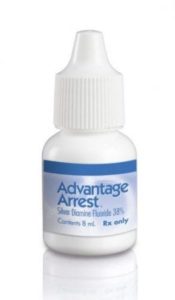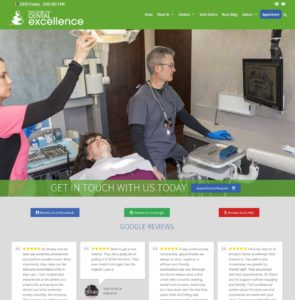
The science of dentistry is changing as more modern techniques and materials are replacing those methods we have all come to associate with the dentist’s office. Many dentists are adopting these practices, which fall under the umbrella of the term minimally invasive dentistry.
Minimally invasive dentistry, as the name implies, focuses on techniques that preserve more of a tooth’s structure.
The discipline focuses on prevention and preservation.
How is this different than the dental care we have all become accustomed to?
The Difference in Dental Care
“The primary focus of dentistry is to help patients retain their natural teeth as long as possible,” says Dr. David Brusky.
He adds, “Minimally invasive dentistry allows us to do that by first focusing on the prevention of many common dental problems. Then, if problems do occur, we can provide restorations that preserve as much of a patient’s tooth as possible.”
Minimally invasive dentistry focuses on three main elements. These include dietary prevention, dental prophylaxis and minimally invasive dental restorations.
A Focus on Prevention
Dr. Brusky says, “As a minimally invasive dentist, I would encourage the patient to engage in rigorous home care to help preserve the teeth and prevent dental problems later on.”
Dietary changes might include eating a mostly whole food, plant-based diet, avoiding most processed foods which tend to be high in simple sugars, and eating fermented dairy like yogurt. In fact, any high-quality probiotic may help to create a more healthy microflora in the mouth and throughout the body. Drinking green tea has also been shown to have positive oral health effects.
Dental prophylaxis, according to Dr. Brusky, would involve patients swishing with a non-alcohol antibacterial rinse such as Closys during their nightly oral routine and/or swishing with refined coconut oil. This technique is referred to in dental circles as “oil pulling”.
When restorations do become necessary, dentists like Dr. Brusky are turning to gentler dentistry techniques.
A Switch to Gentler Dentistry
In the past, dentists were taught to drill out dental caries (the technical name for tooth decay and cavities) and did so by adopting the now outdated technique of “extension for prevention”. This involved drilling undecayed grooves that might decay in the future.
Dr. Brusky says, “Dentists were less concerned about destroying tooth structure. But these days, we focus more on keeping as much of the tooth intact as possible.”
He adds that drilling still has a place in minimally invasive dentistry, but more care is taken on how drilling is done.
“By using the smallest burs possible on a drill and very high powered magnification, I’m able to rid the tooth of decay only, leaving most of the healthy tooth structure alone,” he says.
Dr. Brusky also says that, instead of amalgam fillings, which contain 51% mercury and require a larger preparation in the tooth to be placed, he only uses direct resin (white) fillings.
In addition, Dr. Brusky’s opinion is that he would opt for resin fillings or porcelain onlays over crowns whenever possible. Veneers are a more tooth-conserving restoration than a crown and are better for the strength of the tooth and health of the nerve.
He says, “If a patient has a restoration that is too large for a typical filling and that could be restored with a crown, I’ll present the option of using an onlay, which doesn’t require as much natural tooth removal.”
Crowns not only require aggressive tooth removal to enhance their strength, but these restorations are more expensive than onlays.
“That’s another benefit to minimally invasive dentistry,” says Dr. Brusky. “It keeps the patient’s costs lower.”
Other techniques the dentist recommends include orthodontics instead of crowns or veneers to improve the aesthetics of a smile or function of a bite.
He would also choose implants over bridges. Like crowns, bridges require extensive tooth removal, except the removal, is performed on the teeth adjacent to a gap that help to keep the bridge in place.
“Many times, prepping these teeth is unnecessary, so minimally invasive dentistry like using dental implants will prevent natural tooth structure from needlessly being damaged while doing all we can to restore the patient’s smile. Implants can’t decay!”
Dr. Brusky says that he also tries to keep drilling to a minimum. He says, “I have a product called Icon by DMG that is used to fade or eliminate white and brown spots on the front teeth that doesn’t involve any drilling.”
Lower Costs and Healthier Teeth
What are the benefits of these gentler dentistry techniques?
Dr. Brusky says, “Minimally invasive dentistry offers multiple wins for patients: Less expensive techniques, in most cases, fewer dental problems, and as little drilling as possible.”
For more information on minimally invasive dentistry or to schedule an appointment with Dr. Brusky, contact our office today.







I really like the fact that a minimally invasive dentist will help their patient reduce costs. If that’s the case, then I definitely want to look for one in my area. Since I don’t have dental insurance, it is important that I can go to a practice that has reasonable prices.